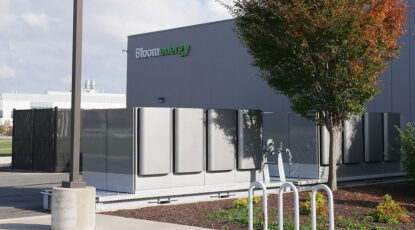According to Navigant Research’s latest ‘Microgrid Deployment Tracker’, 575 new microgrid projects moved off the drawing board and into planning and deployment phases over the first half of 2019. North America is also one of the global leaders in microgrid capacity.
That’s a rapid rate of adoption (and a surprising center of gravity) for a technology once considered useful only for bringing power to the developing world.
So what’s behind the surge in U.S. microgrid deployments?
It may be useful to look all the way back to 2012 and Superstorm Sandy for answers.
In October of that year, Sandy plunged vast regions of the Eastern seaboard and more than eight million people into darkness, in some cases for weeks.
However, amidst the massive stretches of blackouts, small islands of light and heat emanated from Maryland to downtown Manhattan: microgrids.
In that moment, when institutions great and small were crippled by outages, a nascent technology had its finest hour yet. Business leaders and energy specialists took note.
Fast forward to today, and microgrids are hitting the mainstream. Hospitals, data centers, high tech manufacturers, retailers, universities, corporate campuses, and even entire communities are deploying microgrids in the pursuit of power security.
Navigant says there are now 4,475 microgrid projects around the world with a generating capacity of 26,769 megawatts of power.
The surge in microgrid adoption is driving demand for stationary fuel cells such as Bloom’s Energy Servers. Bloom Energy Servers have been deployed in more than 80 microgrids, 65% of which have been deployed in the past three years. Our backlog suggests we’ll continue to see strong growth in the category in the year ahead as we capture our share of what Navigant forecasts will be a $31 billion market by 2027.
Learn how a Bloom microgrid can meet your power reliability needs.
How Microgrids Protect Commercial and Industrial Facilities
Microgrids are miniature versions of the centralized electric grid that dispatch, distribute, and regulate the flow of electricity. Many microgrids can operate and switch between grid-connected and grid-islanded modes, but it’s their ability to be ‘islanded’ from the main electrical grid which is their key distinguishing factor.
That ability to continue powering commercial and industrial operations through grid outages is proving increasingly valuable to organizations as grid outages increase in frequency and duration.
According to the Eaton Blackout Tracker, there were more than 3,500 utility outages in the U.S. in 2017. From 2016 to 2017, the duration of electric power outages in the U.S. doubled, with an increase in extreme weather events the main cause according to the EIA.
Those outages aren’t just inconvenient; they’re costly. The Department of Energy estimates U.S. economic losses from outages at $150 billion each year.
With the U.S. economy ever more dependent on electricity for its digital and high-tech industries, it is little wonder that microgrids are rapidly gaining favor.
Extreme Networks and II-VI Inc. Join List of Bloom Energy Microgrid Deployments
Two new Bloom Energy microgrid deployments in New Jersey and California demonstrate the dexterity of microgrids when it comes to solving a variety of electricity supply challenges.
II-VI (“two six”), a global leader in engineered materials, deployed a microgrid at its Warren, New Jersey-based manufacturing facility to address growing power needs. Over the past year, the company has ramped up production to meet demand for its 3D sensing technology. However, its local utility became unable to supply more power quickly enough to keep up with II-VI’s growth. After weighing up its option, II-VI deployed Bloom’s on-site, grid-independent power solution to ensure it could continue to grow. The 2.5 MW power system was up-and-running within just nine months.
Importantly, the system is also making a major contribution to II-VI’s sustainability goals, by reducing CO2 emissions and offsetting millions of gallons of water use relative to the grid.
Extreme Networks had a slightly different motivator for its microgrid deployment. The rapidly transforming San Jose-based networking company suffered three separate utility power outages to its HQ lab and test facilities in the summer of 2018. The resulting loss of productivity inspired Extreme to seek out an alternative energy solution to ensure an uninterrupted electricity supply to those critical engineering and IT activities. That is exactly what Bloom’s microgrid provides.
Like II-VI, Extreme will reap additional benefits beyond energy resiliency. The company expects to cut its HQ electricity costs by 25%, and to substantially reduce its carbon footprint too.
Today, Extreme Networks and II-VI Inc. are trailblazers; early adopters in the corporate energy resiliency movement.
As our economy continues to grapple with the causes and consequences of climate change, it’s likely there will be many more stories like theirs.
See how Bloom’s microgrids helped Home Depot power through New York’s recent blackouts.



